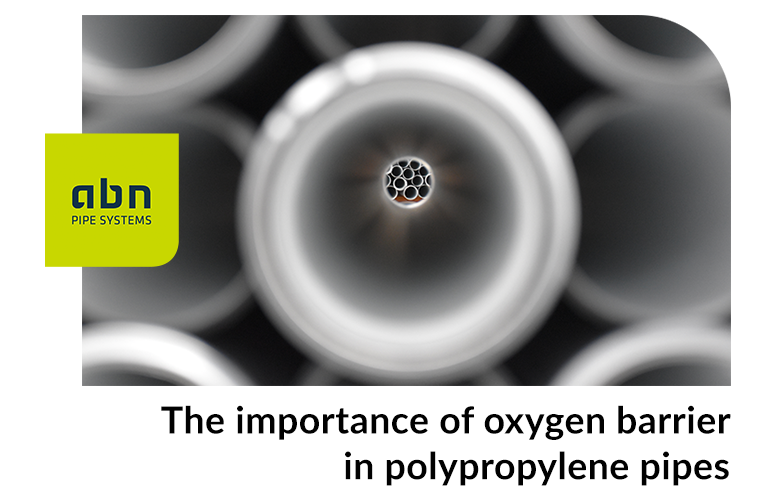On the road to establishing a more sustainable future in the construction sector, many advances are being invested in to achieve solutions that meet the demands of professionals and the new architectural paradigm.
Along these lines, the use of plastic pipes in the design of public, private and industrial networks for water disposal, sewerage and water supply is gaining more and more importance. This trend confirms the reliability of plastics as effective and efficient piping materials.
Permeability of polypropylene pipes
One of the materials that provide greater efficiency are polypropylene pipes; but this type of pipe generally has a peculiarity: a certain level of permeability to gases.
Uno de los materiales que proporcionan una mayor eficiencia son las tuberías de polipropileno; pero este tipo de tuberías, generalmente, presentan una peculiaridad: cierto nivel de permeabilidad a los gases. This design allows oxygen to pass through, which means that a plastic tube exposed to the atmosphere can experience oxygen propagation from the outside to the inside. This permeability is subject to variations depending on installation conditions, including ambient temperature and pressure.
Challenges for professionals
In the maintenance of wastewater disposal systems, there are known challenges for professionals in the industry, including oxidation of components, sludge formation (especially magnetite) and biofilm development. All this is due to the penetration of oxygen through the plastic pipes.
It is at this point that oxygen barrier management becomes crucial to maintain performance and prolong the life of the facility.
Current systems and limitations of antioxidant barriers
To counteract this permeability, modern systems incorporate antioxidant barriers, often composed of Ethylene-Vinyl-Alcohol (EVOH) or aluminium. However, these solutions are not without their challenges.
In the case of polypropylene systems, removal of the barrier layer is required for welding, which can add complexity to installations.
In addition, an important sustainability consideration arises: by introducing these materials into the barrier layers, such as EVOH or aluminium, the product may no longer be fully recyclable, impacting its environmental footprint.
New sustainable and efficient solutions
Oxygen barrier management is a critical aspect in the efficiency of polypropylene piping systems. Therefore, as the industry evolves, the search for solutions that address this issue without sacrificing sustainability becomes paramount.
There are new solutions with which, without changing the structure of the pipe and through a process in which, by means of the incorporation of additives, the anti-oxygen barrier effect can be obtained. With such innovations, layer removal processes are no longer necessary for welding and the product retains its recyclability and sustainability.
In this context, the commitment to continuous innovation promises not only to maintain energy efficiency, but also to drive sustainability throughout the production chain.
